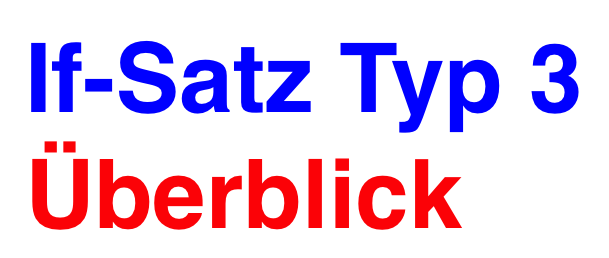If-Satz Typ 3:
In Bedingungssätzen drückt der Nebensatz (if-Satz) die Bedingung aus, der Hauptsatz das daraus folgende Ereignis.
Der If-Satz Typ 3 drückt eine Unmöglichkeit aus, deren Resultat sich entweder auswirkt auf:
a) die Gegenwart: If he had earned more money, he could buy a new car now.
b) die Vergangenheit: If I had learnt a lot, I would have passed the test.

Bildung Auswirkung Vergangenheit:
Das Conditional 3 mit Auswirkungen in der Vergangenheit wird gebildet:
Nebensatz: If + Past Perfect Tense
Hauptsatz: would (not) have + Past Participle
Achtung: bei he, she, it – would have
Beispiel:
If I had met her (Nebensatz, Bedingung), she wouldn’t have left the city (Hauptsatz).
Bildung Auswirkung Gegenwart:
Das Conditional III mit Auswirkungen in der Gegenwart wird gebildet:
Nebensatz: If + Past Perfect Tense
Hauptsatz: would (not) + Infinitive
Beispiel:
If I had married her (Nebensatz, Bedingung), she wouldn’t leave the city now.
Verneinung:
if not = unless
If you hadn’t learnt more, you wouldn’t have passed the test.
Unless you had learnt harder, you wouldn’t have passed the test.
